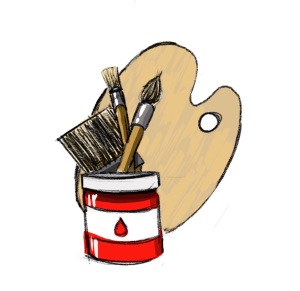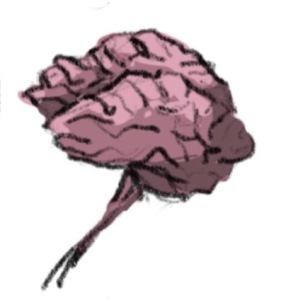A desire to raise awareness of the health benefits of arts and creativity and to encourage creative practices prompted me to start this blog in 2013. My first posts on the topic were Where health and creativity intersect and The healing power of creativity, with later ones on What are the synergies between mindfulness and creativity? and Committing to creativity.
To those of you who have shown an interest in this topic (and you are many!), and especially to those who share a passion for seeing more recognition of creativity and the arts in health, my heartfelt thanks.
Life for me did what it does, and got in the way of regular blogging. While juggling family and work commitments, my writing priority has been the (seemingly endless and time-draining) task of revising my most recent novel manuscript, “The Taste of Red Dust”, which very excitingly has led to me being awarded a place on Fremantle Press’ Four Centres Emerging Writers Program 2019-2020.
However, I have stayed active in the Arts and Health space in my work roles and on social media, keeping an eye on the Arts and Health literature, aided by some dedicated colleagues–special thanks to Deborah Pearson (Chair, WA Arts and Health Consortium & Group Coordinator Arts and Health, St John of God Health Care) and Dr Christina Davies, Research Fellow, School of Allied Health, University of Western Australia (UWA).
The good news? Some excellent reports have been released while I’ve been neglecting my blog, and the Arts and Health evidence and applications continue to grow!
Key Arts and Health Reports 2017–2019
Transformative: Impacts of Culture and Creativity (November 2019) from the ‘Australian Academy of the Humanities’:
“The evidence is clear: when people engage in cultural or creative activities, they generally have better educational outcomes, are less lonely, are healthier both physically and mentally, and enjoy a happier and healthier life in old age.”
The proven impacts of cultural and creative activities are summarised in response to the challenges facing Australia under the domains of Society and place, Economy, Innovation, Health and wellbeing, Education and learning, International engagement and Culture.
Under Health and wellbeing, the research is examined under the following statements:
-
- Better health outcomes are clearly linked to engagement with, and access to, creative and cultural activities.
- Arts and culture play a critical role in the treatment of illness and injuries.
- Arts and culture help with recovery and rehabilitation following an illness or injury.
- Arts and culture help the elderly and people with ongoing illness or injury to live healthier lives.
How powerful are the following questions the report asks on page 56?
“How could Australia be transformed if we…
-
-
-
Promoted the health benefits of arts and cultural activities to the general public in a similar vein to the promotions of physical activity (such as ‘Find 30 [minutes of exercise] every day’), and developed new and innovative health programs that incorporate arts and culture in government run health care facilities?
-
Invested in effective creative programs for older Australians, with the understanding that arts and culture has been shown to raise quality of life for the elderly and may play a critical role in preventing dementia?”
-
-
Arguing that there is insufficient recognition of the potential benefits of the arts, with no mapping against policy portfolios or strategic investment, options to ensure a strategic and coordinated approach are presented.
What is the evidence on the role of the arts in improving health and well-being? A scoping review (2019)
This impressive Health Evidence Network synthesis report from the WHO was authored by Daisy Fancourt and Saoirse Finn.
Notably, “over 900 publications were included in this report, of which there were over 200 reviews, systematic reviews, meta-analyses and meta-syntheses covering over3000 studies, and over 700 further individual studies.”
The conclusion?
“This report found evidence from a wide variety of disciplinary approaches and methodologies for the potential value of the arts in contributing to core determinants of health; playing a critical role in health promotion; helping to prevent the onset of mental illness and age-related physical decline; supporting the treatment or management of mental illness, non-communicable diseases and neurological disorders; and assisting in acute and end-of-life care.”
The report contains an excellent summary of interventions that may be useful to specific cohorts, conditions and/or speciality areas. Particularly pertinent for health services given the funding environment: “A third theme was that the evidence base did not just show efficacy of arts interventions but also showed economic benefits, with some arts interventions showing equivalent or greater cost-effectiveness to possible health interventions.” (3.2 page 53).
Interesting is the statement that “much of the prevention research has focused on primary or secondary prevention. There is very limited research considering specifically tertiary prevention, such as whether the arts could help in reducing the risk of comorbidities in individuals with either mental or physical illness.” (3.2.1 page 53). As comorbidities are so common in chronic conditions, it would be great to see this gap studied further.
The policy considerations derived from the evidence map a tangible way forward. (see page viii-ix or 3.3 page 55-56)
This BMJ opinion piece on The role of the arts within health (Nov 11, 2019) also provides an excellent overview of where this study sits in the research landscape.
The All Party Parliamentary Group Inquiry (UK) Creative Health: The Arts for Health and Wellbeing Report (July 2017)
The forward (page 4) provides a succinct overview:
“It is time to recognise the powerful contribution the arts can make to health and wellbeing. There are now many examples and much evidence of the beneficial impact they can have. We have three key messages in this report:
-
-
-
The arts can help keep us well, aid our recovery and support longer lives better lived.
-
The arts can help meet major challenges facing health and social care: ageing, long-term conditions, loneliness and mental health.
-
The arts can help save money in the health service and social care.”
-
-
Again the recommendations plot some next steps and although mostly UK-based, could be modified to suit an Australian or other context.
Special mention to the fabulous drawings on the website by artist, David Shrigley – my favourite image (by a close margin) is THE ARTS ARE LIKE GLUE.
What else?
Rather than covering every individual report that might be helpful, I’ve focused on a few recent releases that have significantly contributed to the literature in this space.
Have I missed something important? If there are others worth looking at, please share the details in the comments and we can all benefit!
Or is there something you’d like to highlight from these reports or share from your own experience?
Where to from here?
Fostering change takes time and can feel daunting. This is an important area that needs more attention, but admittedly there are many other demands and priorities in front of our governments and health services.
Is there one thing you can do to help?
Not all of these will be relevant for everyone, but some ideas are:
- Could you share this post to raise awareness of the importance of Arts and Health?
- Can you add your voice to the topic locally or online?
- Where might the Arts and Health might be relevant in your circles? Can you prompt a discussion to get others thinking?
- Could you suggest that future health-related conferences or meetings include an Arts and Health component? (There’s usually a spot on the evaluations to suggest future topics … or if you are contributing to developing the program, even better!)
- Could you encourage those who might benefit to get involved in an Arts and Health program?
- Are there grant or research opportunities that could help you and your colleagues get more involved in building the evidence and/or what’s available?
- Or do you have other suggestions? Please feel free to share your ideas in the comments.
Little actions that we take together can build momentum.
With best wishes for your creative health and that of our community.
Jacquie
P.S. If you’d like to be sure to catch my next post, please sign up to follow by email (your email address will be kept private and will not be spammed). You can also follow me on Twitter (@JacquieGS) and Facebook.
© 2020 Jacquie Garton-Smith; Art © Frank Pinder (with my thanks for producing these and permission to use)





Fascinating piece, Jacquie. I’ve shared on a few Koorliny Arts Centre pages today.
I’m so glad you enjoyed the post, Monique, and thank you so much for sharing more widely!
This is so interesting Jacquie – to see proof of what I think most writers and doctor/writers instinctively feel to be true. Thanks for such a thorough, well-researched post!
Thanks, Fiona. You are so right – the benefits feel very valid on an intuitive level for many of us. There’s been extensive research demonstrating the health benefits of music dating back to the 1980’s and around other arts and health from the 2000’s on which has been growing, but it’s been hard to get traction, especially here in Australia. With such rigorously conducted reviews of the evidence coming out, hopefully we’ll see wider acceptance and better funding for the space.
In my brief experience working in palliative care, I would sometimes wonder what resources or approaches exist for people, on an existential or spiritual level, apart from mainstream “pastoral care”. Thanks for a comprehensive and thoughtful treatment of the potential of arts and creativity across the whole health spectrum.
A valuable reflection, thanks Julie. It’s great to see so evolving in this space, isn’t it?